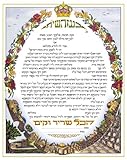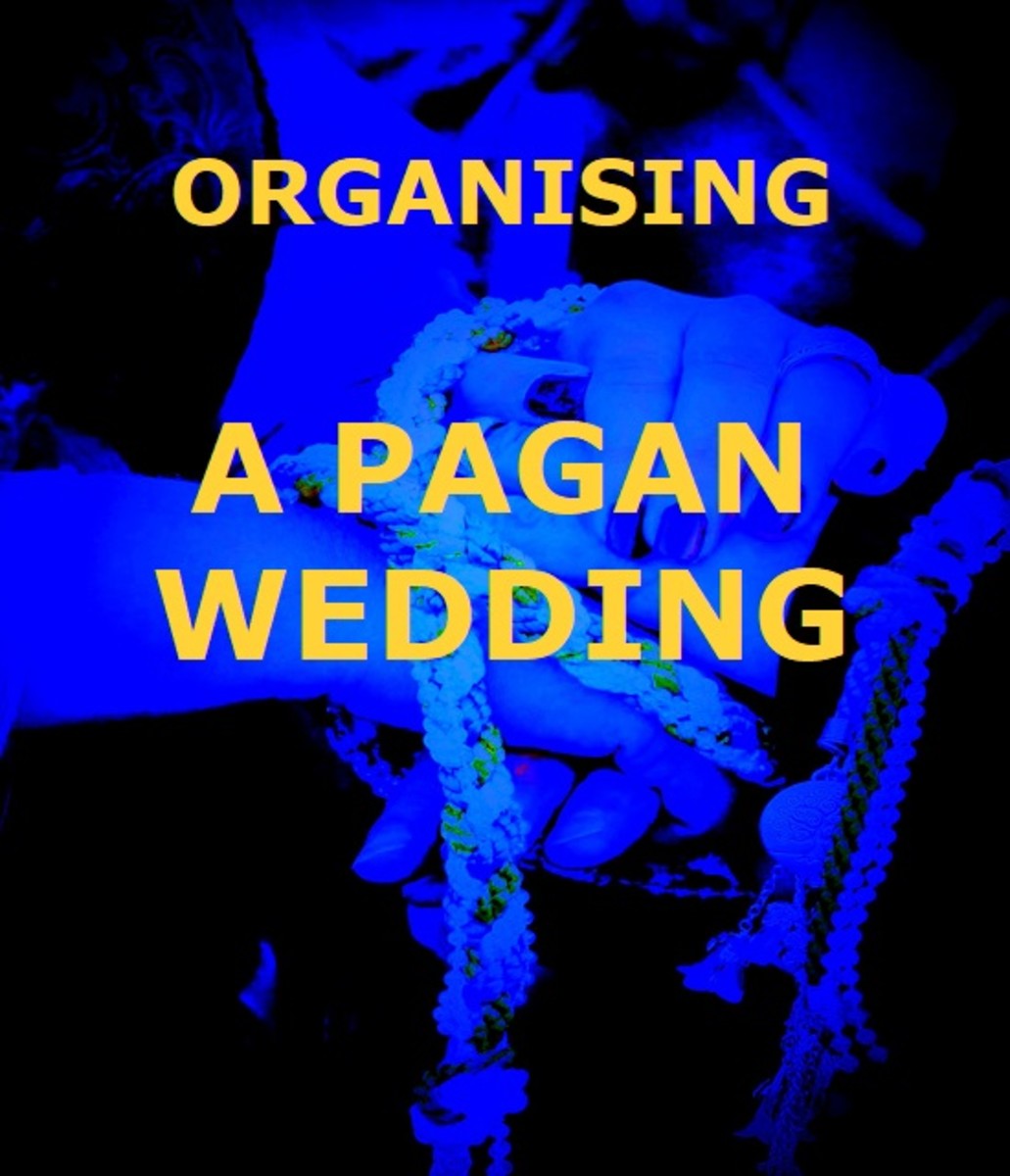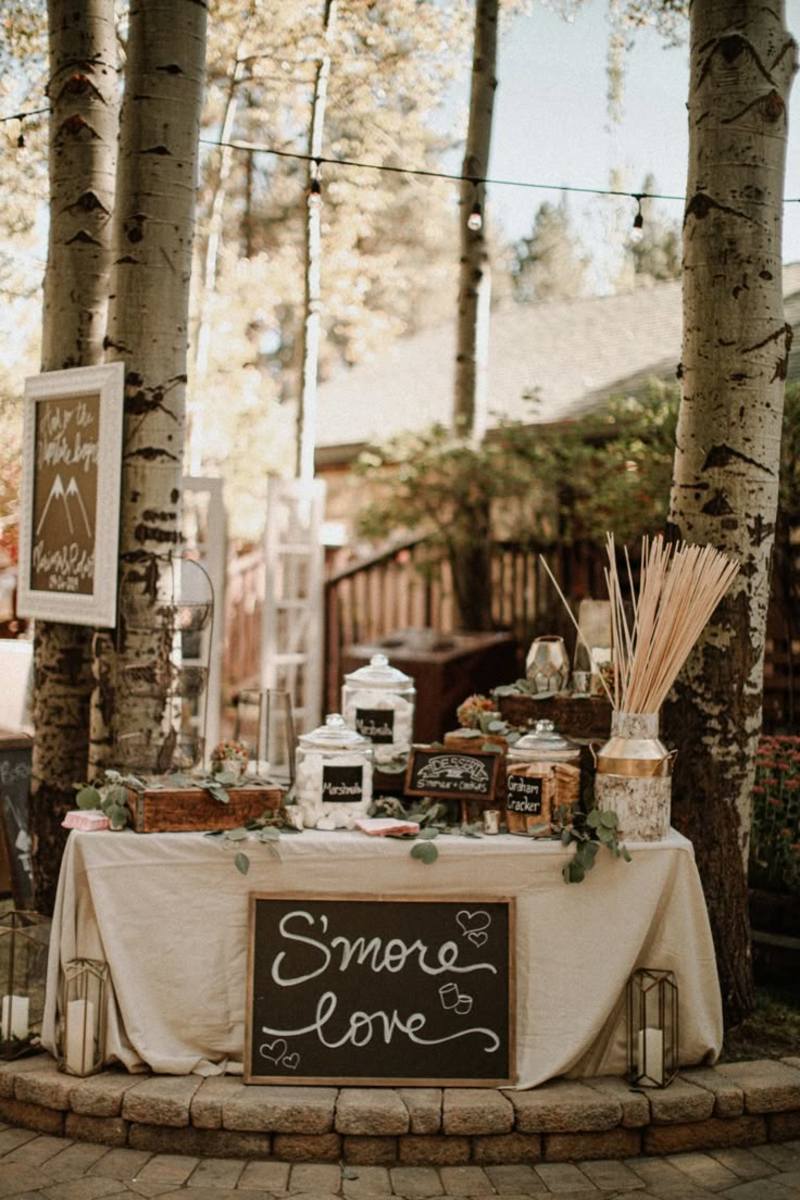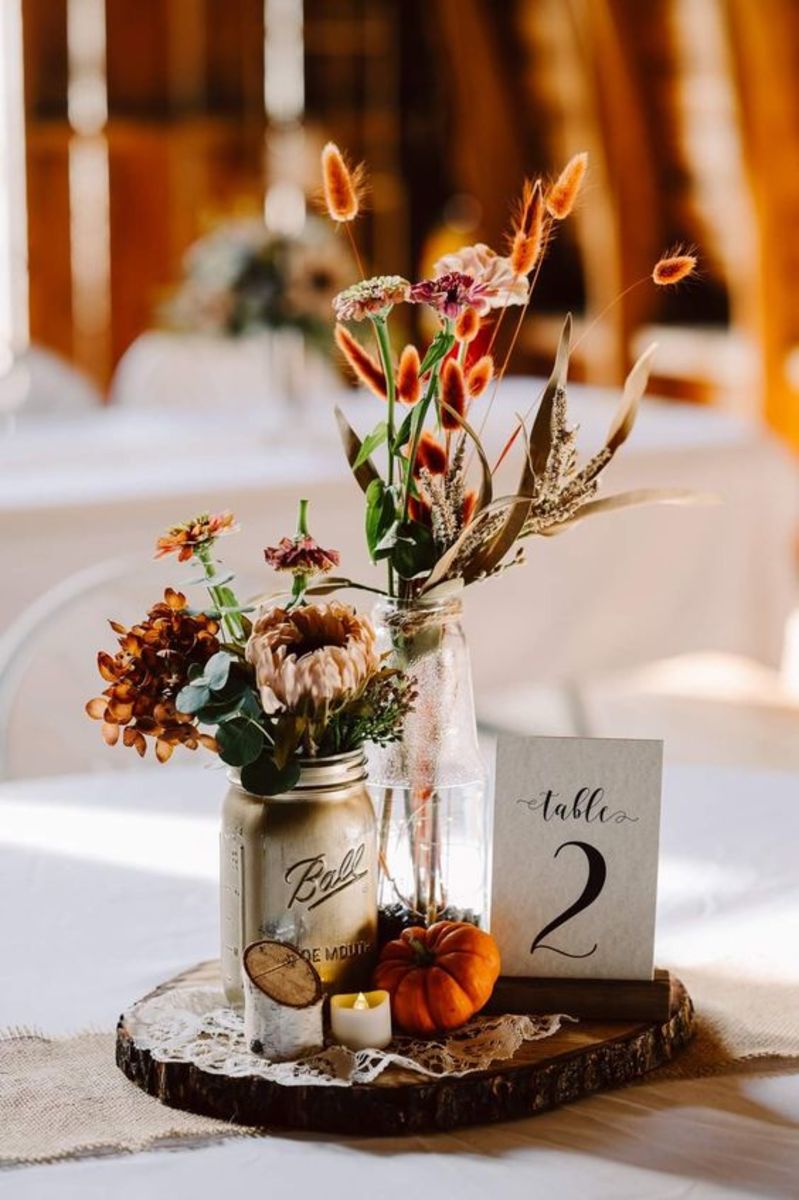How to Plan a Jewish Wedding
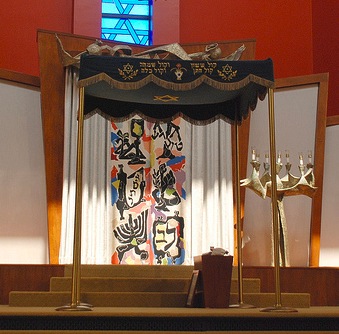
So, you've decided to get married. Mazal tov! You should know nothing but bliss in your wedded life. But right after announcing the big news comes your first challenge as a couple—planning the wedding. A Jewish wedding includes nearly all the constituent parts of a secular one, but adds many distinctly Jewish elements.
What Makes a Wedding Jewish?
Minimally, a wedding must include two events to be considered Jewish: the signing of a ketubah by two witnesses, and the groom's presentation of a ring to the bride and recitation of the legal formula that signals his intention. However, there are many additional standard elements of Jewish weddings today. These include having the ceremony take place under a chuppah, having a rabbi or cantor officiate, and having traditional Jewish dancing at the reception. Read on for comprehensive instructions on how to plan your Jewish wedding.
Choosing a Venue and a Rabbi
These decisions are more closely related than they may appear at first glance. If you already have a rabbi in mind (say, the rabbi you grew up with who still leads your parents' synagogue), he or she may prefer to officiate only at events held within that synagogue or at a local catering hall affiliated with it. Some rabbis will go to any local venue but will only officiate at kosher events. (The food served at the reception is a seudat mitzvah, or "commanded meal." It is another opportunity to begin your married life in a Jewish way, with kosher food.)
If you have a venue in mind but are not currently involved in the local Jewish community, call synagogues in the area to set up appointments to meet with any rabbis that have been recommended by friends or family. The rabbi you choose to officiate at your ceremony should:
- be of a denomination with which you are comfortable. (If you grew up a Reform Jew and live a secular lifestyle, don't look for an Orthodox rabbi.)
- offer you pre-marriage counseling (not only about living a Jewish life, but also about other issues likely to arise early in your marriage, such as family and finances).
- help guide you through the "Jewish" part of planning a Jewish wedding (e.g., what your ketubah should say, what the requirements are for a chuppah if you plan to make your own, and what dates are appropriate for your wedding, among other things).
Personalized Kippot
Jewish Wedding Invitations and Custom Printed Items
Ordering beautiful Jewish wedding invitations is easy nowadays; you can do all your research online and order them from the comfort of your own home. In addition to traditional invitation vendors like Artscroll, online vendors such as Zazzle offer hundreds of options.
In addition to ordering invitations, you'll want to consider other custom-printed items you may need to order in advance. At most Jewish weddings, you'll find a basket of kippot (yarmulkes) for men to wear during the ceremony. They come in different fabrics (most often suede or satin), and you can order them to match your wedding theme color. Inside, the printer will include your names and the date of your wedding.
For a traditional Jewish wedding, you can also order custom benchers with the same information printed on the cover. (A bencher is a small book that includes the grace after meals and some festive songs. Traditional Jewish households keep these books and use them regularly.)
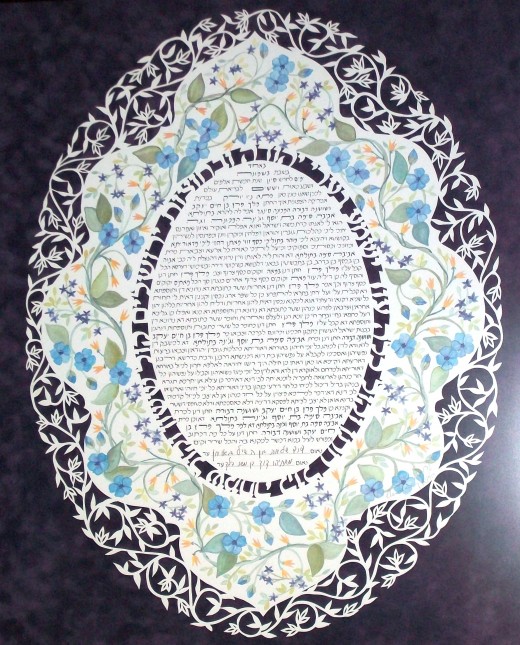
A ketubah is in addition to, not instead of, a secular marriage license. If you want to honor non-Jewish friends or family, consider having them act as witnesses on your secular marriage license.
The Ketubah
The ketubah is the contractual marriage document that specifies the groom's obligations to the bride, namely: providing clothing, jewelry, food, and sex. The groom also agrees to pay the bride a certain amount of money if he divorces her. The ketubah is signed by two observant male witnesses unrelated to the wedding party. If you are short on observant friends, the rabbi and another synagogue employee can be called on to act as witnesses. Many modern ketubot include signature lines for additional witnesses, so you can have female witnesses as well. Note: All witnesses will need to know how to write their Hebrew names, so if the people you have chosen as witnesses haven't signed their names in Hebrew since their b'nai mitzvah 20 years ago, ask them to practice ahead of time.
Choosing a ketubah is a delightful experience, because you and your fiancée will be deciding on the first piece of Jewish art for your shared home. Ketubot come in many beautiful styles, and you can browse them easily online at a website like GalleryJudaica.com or even on Amazon! Some designs offer different text options (e.g., Aramaic only, Aramaic and English, Hebrew and English, Aramaic with the Lieberman Clause), so consult with your rabbi about which type of text you should order.
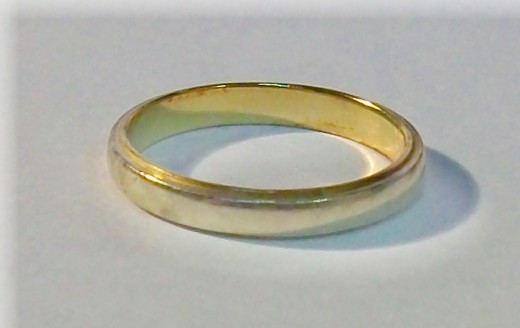
Glass to Break Under the Chuppah
Items You Will Need for the Ceremony
A Jewish wedding has a lot of moving parts, and if you're having your wedding someplace other than at a synagogue or kosher catering hall, you'll need to organize a number of items.
- A chuppah: The wedding canopy is non-negotiable; in a pinch, a couple can get married under a tallit held up by friends or family, but you'll all be a lot more comfortable with a standard chuppah. These are usually fabric held up with four poles set in stands or held by close friends. You can use your synagogue's chuppah, design and sew your own chuppah, or borrow one. Your florist may also be able to supply one on a sturdy flower-covered frame (but that'll cost you!).
- Kosher wine and kiddush cups to be used during the ceremony: Use white wine in case of spills! The kiddush cup does not have to be decorative, but you may want to buy a special one that you will continue to use in your home together.
- Plain gold rings: The rings used during the ceremony must be plain, solid gold without any filigree or inset stones. If the wedding band you want to wear for the rest of your life is fancy, consider buying an inexpensive plain set just to be used for the ceremony.
- A cup for breaking: Make sure it is fragile enough to break easily. Some rabbis use incandescent lightbulbs (not CFLs) for this purpose.
Mikvah
Traditionally, a bride uses the mikvah (ritual bath) for the first time shortly before her wedding. Even if you are not planning to follow the laws of family purity, consider adding this to your to-do list. Bring your mother, sister, or best friend to help you in this spiritual rite of passage.
To find a mikvah near you, look online or call your local synagogue. Some mikvahs reserve daytime appointments for brides, so call ahead to schedule. You should immerse as close to your wedding day as possible, but do it before you get your manicure; you can't wear nail polish in the mikvah! (You should also have finished your period a week or more before your immersion, but you were probably going to make sure you didn't have your period during your wedding anyway, right?)
The Aufruf
An aufruf is the calling up of the groom (or bride and groom, depending on your denomination) to say the blessings on the Torah (called an aliyah) the Shabbat before the wedding. Usually the groom's parents make the arrangements for this and for sponsoring the kiddush (social hour with food) after services, but you should discuss the scheduling and details with them. It is generally acceptable to have the aufruf a week or two early if the synagogue where it is being held is far from your wedding venue.
Before the Ceremony
In some traditional communities, the groom has a brief reception before the ceremony, called a tisch (table), where his friends and male family members distract him to calm his nerves. Meanwhile, the bride holds court in a separate room with female family and friends. These traditions can make your day extra special, but they are not required.
Before the ceremony under the chuppah takes place, the ketubah signing will occur. Between the ketubah signing and the wedding ceremony, the groom veils the bride (called bedeken). (A veil is an essential part of the bride's outfit for a Jewish wedding, although the style is up to you.)
Further Reading
The Jewish Wedding Ceremony
The ceremony itself consists of two main parts: erusin, or bethrothal, and nissuin, or marriage. (Many years ago, these two parts used to be separate ceremonies that could take place up to a year apart, but now they are usually combined.) This is the usual order of a Jewish wedding ceremony.
- First the groom and then the bride are walked down the aisle by their parents. When the bride arrives at the chuppah, she circles the groom seven or three times, depending on your tradition.
- The rabbi says the blessing over wine and a betrothal blessing. The groom and bride drink from the kiddush cup.
- Erusin consists of the groom giving the bride a ring and reciting the traditional marriage formula, "Behold, you are sancitified to me with this ring according to the laws of Moses and Israel."
- The rabbi reads the ketubah aloud to separate the parts of the ceremony. In a double ring ceremony, the bride then gives the groom a ring and recites words of her choosing, often from the Song of Songs.
- Nissuin consists of the sheva brachot (seven blessings) and the breaking of the glass. Between the two, the couple drinks again from the kiddush cup, and the rabbi may offer some words of wisdom about the couple or about the adventure of Jewish married life.
- Yichud (togetherness): After the ceremony, the bride and groom are taken to a private room for a few minutes of alone time, to catch their breath and break their fast, if they have been fasting.
The Reception
After you emerge from the yichud room and are announced at the reception, your band or DJ will generally play some simcha music for Jewish dancing. When you are interviewing bands or DJs, ask them what experience they have with Jewish weddings, so you can find out whether they will be prepared to play enough Jewish music. (The amount is up to you; if you don't care for circle dancing, one or two songs may be enough. On the other hand, if you have a more traditional wedding where your friends will be dancing to entertain you and you will ultimately be lifted up in your chairs, you may want half an hour or more.)
After the meal and dancing, the reception ends with a special grace after meals that includes a repetition of the sheva brachot. If you do not have friends who can recite the blessings for you, consider asking your rabbi to join you at your reception and recite them. After all, at such a joyous occasion, who wouldn't want to praise God "who created joy and gladness, groom and bride, mirth, song, delight and rejoicing, love and harmony and peace and companionship"?




